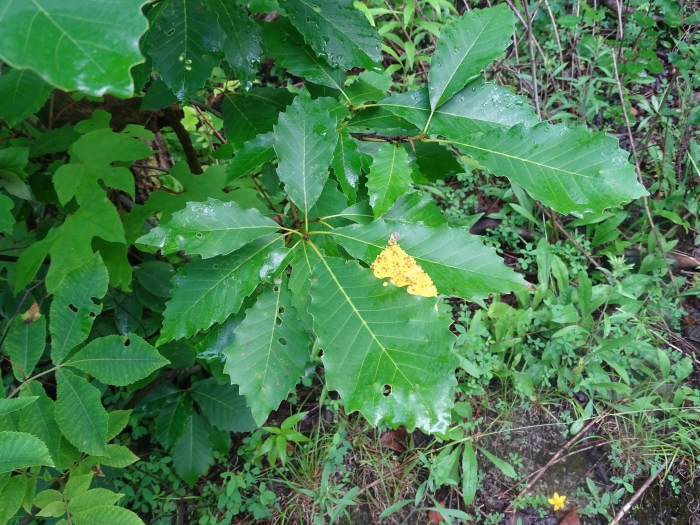Chinquapin Oak
(Quercus muehlenbergii)
Chinquapin Oak (Quercus muehlenbergii)
/
/

Reuven Martin
Public Domain












































































Estimated Native Range
Summary
Chinquapin Oak is valued for its adaptability to different soil types, including alkaline soils, and its drought tolerance once established. It is often used in urban environments, parks, and large gardens for its attractive form and foliage. The tree is monoecious, with male flowers in drooping catkins and female flowers in short spikes, blooming from April to June. The acorns are sweet and edible, maturing in September or October, and are a valuable food source for wildlife. This oak is relatively low-maintenance, requiring full sun and well-drained soils. It is less susceptible to oak wilt than other species but can be affected by chestnut blight and oak leaf blister.CC BY-SA 4.0
Plant Description
- Plant Type: Tree
- Height: 40-60 feet
- Width: 50-70 feet
- Growth Rate: Moderate
- Flower Color: N/A
- Flowering Season: Spring
- Leaf Retention: Deciduous
Growth Requirements
- Sun: Full Sun
- Water: Medium
- Drainage: Medium, Fast
Common Uses
Bee Garden, Bird Garden, Butterfly Garden, Deer Resistant, Drought Tolerant, Edible*Disclaimer: Easyscape's listed plant edibility is for informational use. Always verify the safety and proper identification of any plant before consumption., Rabbit Resistant, Salt Tolerant, Street Planting
Natural Habitat
native to a variety of habitats including rocky slopes, well-drained upland woods, and limestone outcrops in the central and eastern United States, extending into southeastern Canada and Northeast Mexico
Other Names
Common Names: Chinkapin Oak, Yellow Chestnut Oak, Yellow Oak, Chêne De Mühlenberg, Chêne Jaune
Scientific Names: , Quercus muehlenbergii, Quercus muhlenbergii, Quercus castanea, Quercus prinoides var. acuminata, Quercus prinoides f. alexanderi, Quercus sentenelensis, Quercus brayi, Quercus acuminata, Quercus alexanderi
GBIF Accepted Name: Quercus muehlenbergii Engelm.